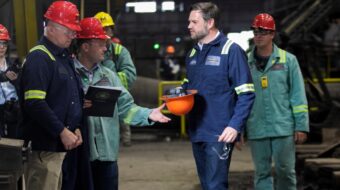For the last five months, job creation has failed to keep up with demand. But you’d never know that from most news stories.
Within minutes of the Labor Department’s report on the employment situation for August (issued Sept. 1), The Associated Press reported: “Hiring picked up in August as employers added 128,000 jobs, pulling the unemployment rate down to 4.7 percent, sending a Labor Day message that the economic expansion still has staying power.” The AP dispatch said the report should ease fears that the expansion is in danger of fizzling out.
The AP failed to mention that 150,000 new jobs are needed every month to keep up with the growth of the working age population. For the last five months, job growth has averaged only 119,000. Sounds like a fizzle to me!
Harder to find a job
Stock prices moved up in response to the sluggish job growth. For Wall Street, the news means that interest rates are likely to remain relatively low.
For workers, the news means it is harder to find a job. Jared Bernstein of the Economic Policy Institute points out that 18.4 percent of the unemployed have been seeking work for at least six months. Historically, at today’s level of unemployment, only 11.7 percent were out of work for that long.
But the weak job market also affects those who are working. Wages are barely keeping up with inflation, and most of the wage gains are going to higher-paid workers and managers. Why should employers raise wages when there are plenty of unemployed workers knocking at the door?
Bernstein views the August report as confirming an emerging trend of lower job growth. “The group who might view this trend as a disappointment,” he says, “is the tens of millions of workers whose living standards have yet to reflect much gain at all from this recovery. If this slower job growth regime persists, it is unlikely that their bargaining clout will improve to the point where they have a chance to claim their fair share of the growth they have been instrumental in creating.”
With the word “recession” appearing with increasing frequency in business publications, the November elections assume exceptional importance. Following the 2001 recession, the Republican Congress lavished tax cuts on the rich, but was exceptionally stingy in the amount and duration of extended unemployment benefits. Changing Congress is the first step (and only the first step) in fighting for a decent job for everyone who wants to work, and for a decent safety net for those who can’t find jobs.
How to read the numbers
Some final notes about the August Employment Situation report:
First: about half of the workers displaced by Hurricane Katrina have been unable to return home. For those who are still displaced, unemployment is 22.2 percent. But we won’t have to worry about them much longer. After October, the Labor Department will no longer collect information about Katrina evacuees.
Second: some readers may have noticed a seeming contradiction. If too few jobs have been created to absorb new entrants to the labor force, why is the unemployment rate the same today (4.7 percent) as it was in April?
The unemployment rate is based on a survey of 60,000 households conducted by the Census Bureau. That survey shows an average gain of 188,000 jobs per month from April thru August. The Labor Department also conducts an establishment survey covering 400,000 businesses and government worksites. There are many technical differences between the surveys, but the establishment survey is considered a far more accurate reflection of the number jobs in the economy. The figure of 119,000 jobs per month comes from the establishment survey.










